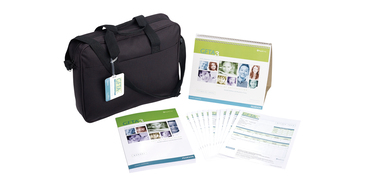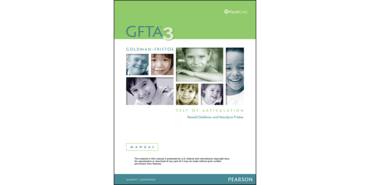The Goldman-Fristoe Test of Articulation™ 3 (GFTA™-3) provides accurate scores for making diagnostic and placement decisions. Guidance on using this test in your telepractice.

Goldman-Fristoe Test of Articulation 3
GFTA-3
The Goldman-Fristoe Test of Articulation™ 3 (GFTA™-3) provides accurate scores for making diagnostic and placement decisions. Guidance on using this test in your telepractice.Choose from our formats
Kits
Starter & complete kits, print & digital
4 options
Test forms reports
Booklets, record forms, answer sheets, report usages & subscriptions
5 options
Support materials
Manuals, stimulus books, replacement items & other materials
4 options
All products
All tests and materials offered for GFTA-3
13 options
